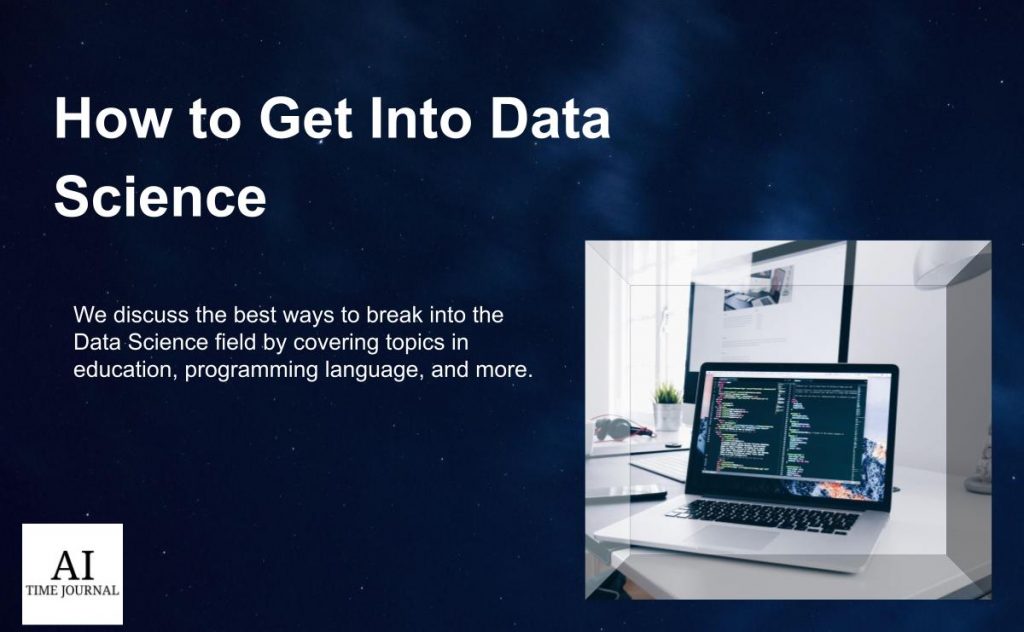The world of technology is evolving faster than ever and everybody wants to be a part of it.
Table of Contents
- Education
- Fundamentals
- Specializing in your chosen programming language
- Practice makes perfect!
- Your own projects
- What more can I do?
Back in 2015, the demand for data scientists was off the charts according to LinkedIn Workforce Report, United States in August 2018. More and more industries are dependent on big data analysis to make decisions, however, there has been a decrease in the amount of data scientists available. Many people want to get involved but many also do not know how to get there. This article will give insight into how you or someone you know can do so.

Education
The first thing we will look into is education. The different types of educational systems you can get into, what you will need and not need.
There are many routes you can go through to get into the world of Data Science. Here’s a breakdown:
- STEM degree – This typically includes degrees such as Biology, Chemistry, Physics, Maths, Information and communications technology (IT or ICT), Computer science, and Economics. These degrees build advanced academic knowledge in a technical/scientific field. The content of these subjects has strong mathematical and research skills, in turn allowing further development of these skills using statistics behind machine learning models and creating academic papers based on these skills.
- Data Science graduate – Universities are now offering data science and machine learning courses and MSc programs in Data Science which include computational and statistical approaches, allowing the implementation of these skills for solving complex problems. This allows students to gain advanced technical and practical skills in the collection, collation, and analysis of data.
- Bootcamp – There are a lot of boot camps that offer 3, 6, and 9-month courses that have a list of different courses in the field of technology. It can range from Data Science, Web Development, and UX Design. Bootcamps can be difficult as you need to learn how to work in a fast-paced environment in a short amount of time, learn new skills, and do a lot of self-learning. Examples of these boot camps:
- Coursera
- Lambda School
- DataCamp
- Udacity
- Flatiron School
These are three ways you can pave your way into Data Science, however, Data Scientists always have to continue building and practicing their skills. Learn more here in this “Data Science Course”.
Fundamentals
You always have to start with the building blocks. That is with understanding everything in life. If you do not understand the core, you will struggle to build. The fundamentals in data science are topics such as statistics & probability and maths.
When it comes to learning the fundamentals of these topics, I will always recommend Khan Academy. He got me through my secondary school exams, and into my college years and still helps me through understanding elements of my Data Science career.
Specializing in your chosen programming language
The next step I would recommend is choosing the correct programming language for you and expanding your knowledge in that language. There are many different programming languages such as R, Python, Javascript, Ruby, C++, and more.
Practice makes perfect!
Once you have advanced in your programming language, it is a matter of implementing these to test your knowledge. Working on challenges is a great way to challenge yourself, and figure out what you do and do not know. Allowing you to determine what you need extra focus on, essentially finding your strengths and weaknesses. Two great examples of where you can do this are:
Your own projects
Once you have a good grasp of your chosen programming language through testing it in Kaggle and Leetcode challenges, you will then be able to make decisions on which approach to take in order to get the answer you wish to achieve from your data as well as being able to walk through how your code works.
At this point, I would highly recommend creating your own projects and implementing these skills. You can gather data from nearly anywhere online. I would start with Kaggle and then slowly look into Government websites. You can load these data and start looking into what you would like to predict, create your hypothesis, start cleaning the data and implement machine learning algorithms and data visualizations that will either prove your hypothesis right or wrong.
This is vital for those who do not have a degree behind them. It will help you build your skills, improve them, and also present to potential recruiters what you are capable of. You can then add these to your resume/CV to showcase your data science projects.
What more can I do?
- Github – This is a code hosting platform that allows showcasing your work and also collaborate with others to work on projects together anywhere around the world. From personal experience, a lot of recruiters will ask for your GitHub to see your level of activity on your account, to have a gander at your code, and judge your level of knowledge.
- Personal Website – I highly recommend building a portfolio as you can include everything that you were not able to share in your resume/CV. You can make it as personal as possible and even go above and beyond creating your own website using the skills you may have learned such as HTML and CSS.
- Blogging – writing about your projects, explaining your code, and train of thought can go a long way toward understanding your code much better. You can also start blogging about topics that you do not find are your strong point and start exploring how to strengthen them. There are platforms such as Medium which offer a monetary incentive when blogging. AI Time Journal also offers blogging internships.
- Download AI Time Journal’s ebook on How to Get Into Data Science and check out our shortlist of the best data science books.
Although this article was primarily based on how to get into Data Science, all the above will still be able to get you into the field of technology, whether it is Web Development or UX Design.
We hope that this article has brought you great insight into how to maneuver into a different field or progress in your current.
